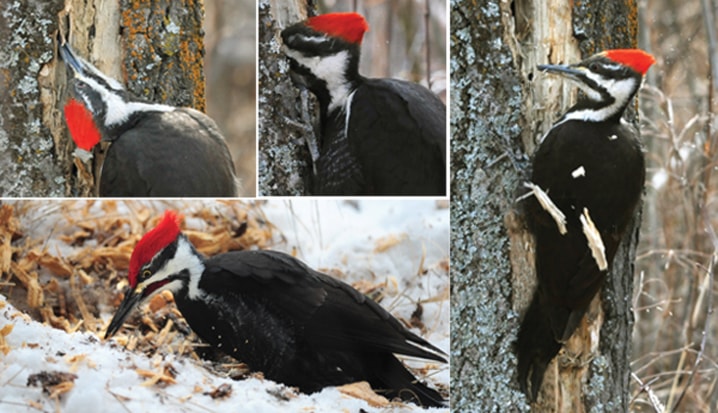I remember the first time when, several decades ago, I was able to steal up on a pileated woodpecker. The bird, a female, was hammering so furiously and intently at the base of a dead spruce tree that I was able to creep up to within range of the flying chips.
From this intimate vantage point, I marveled at both her regal beauty and at the speed and efficiency with which she power-chiseled the wood.
Just before she flew off, she turned her piercing yellows eyes towards me and — for a few suspended moments — we held each other’s gaze.
That transformative encounter sparked my life-long interest in woodpeckers, which are among the most remarkable of all birds.
Pileated woodpeckers are the largest of our 10 Alberta woodpecker species. Although they are fairly common throughout the wooded areas of central Alberta, a sighting of one of these prehistoric-looking birds is always a treat. Their large size and loud calls are as impressive as their characteristic undulating flight pattern.
The life of a pileated woodpecker revolves around pecking. Waking hours are consumed with a relentless search for high-protein insects, which they locate through their keen sense of hearing. Juicy carpenter ants, which the birds extricate from cathedral-like catacombs in spruce snags, are a main food source. The birds will also eat other bark insects, fruits and berries, and are sometimes attracted to backyard suet feeders. They also peck to communicate with their mates and to advertise territories. In the spring, they spend days excavating enormous nesting cavities, usually in very large poplar trees.
Woodpeckers play an important role in the forest ecosystem by consuming massive quantities of insects. Their presence is also crucially important to dozens of other species of tree cavity dwellers that are unable to create their own holes. Local species such as merganser, goldeneye and bufflehead ducks, flying and red squirrels, saw-whet owls and bats all rely on woodpeckers to create their homes for them.
Pileated woodpeckers are especially important for larger cavity-nesting ducks because they are the only primary excavators that leave behind cavities large enough for the ducks to use.
Myrna Pearman is the Site Services Manager and Biologist at Ellis Bird Farm. She can be reached at mpearman@ellisbirdfarm.ca
